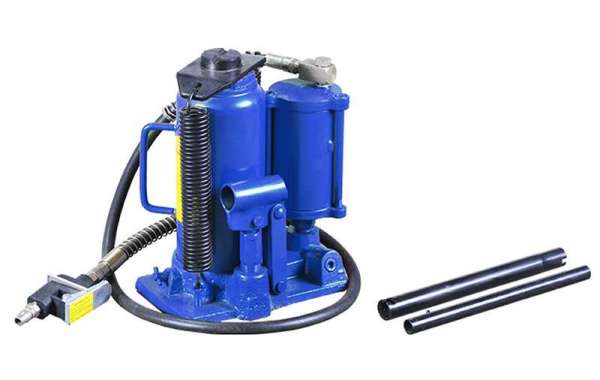When performing inspections and maintenance on an aircraft, utilizing a hydraulic air bottle jacks is crucial for safety in order to avoid accidents, damages, and injuries. Depending on the size and model of the aircraft being worked on, there are various hydraulic jack types that may be used such as bipod, tripod, quadropod, and axle aircraft jacks. In general, tripod and axle jacks prove to be the most widely used, due in part to their offered benefits and capabilities. In this blog, we will discuss the tripod and axle aircraft jack, as well as the aircraft jack labeling system and inspection process to help you have a better understanding of jacks.
As one of the most popularly used hydraulic jack types, the tripod aircraft jack allows for the aircraft to be lifted upwards in order for inspection and maintenance. Surrounded by three legs, a central hydraulic cylinder and pump assembly function to lift the aircraft, and operations should always be performed on flat ground so as to not damage the hydraulic cylinder of the jack. For aircraft operations that do have an angle of incline, however, the bipod and quadrupod aircraft jack types work best when the angle is six degrees or less.
Depending on the type of tripod jack, the height of the equipment might either be a fixed value or variable. With a fixed height tripod jack, the legs are a set length, and thus cannot be changed. With variable tripod jacks, the length of legs may be adjusted through the attachment of extensions. While both types of jacks prove the same in reliability for assisting in maintenance procedures, variable height tripod jacks can be useful in particular if one is planning to operate on multiple aircraft that are of different sizes.
Unlike the tripod jack type, axle jacks are actually not used to lift the aircraft as a whole, instead being employed specifically for lifting only the wheels. As a result, axle jacks primarily serve for maintenance and repair operations concerning the wheels, brakes, tires, or struts. Due to the area of operation for such procedures, there is no need to lift the entire aircraft to conduct proper maintenance. For axle jacks, there are three variations available including hand-carried, horseshoe, and outrigger jacks. Hand-carried axle jacks are the most lightweight option of the three, and they may be manually operated through hydraulic pumps. The horseshoe axle jack is also arm powered, featuring two hydraulic cylinders. Lastly, the outrigger axle jack is the most robust, and a two-speed pump powers the hydraulic cylinder with hydraulic fluid.
If you already own a hydraulic jack and are unsure of which type it may be, one should always refer to the label on the equipment. On a standard jack label, operators can find a plethora of important information such as the type of jack, how much weight it can bear, the variation, if it is capable of extension attachment, and more. For tripod jacks, labels will often include the letters “FH” or “VH”, denoting whether it is a fixed height or variable height jack. Axle jacks, on the other hand, will typically have letters such as “HC”, “OR”, or “HS” to designate which of the three variations it is.
Due to the importance of aircraft jacks, one should always keep their equipment well maintained to guarantee safe operations, and jacks should be inspected every time before they are used. When conducting an inspection, the operator should always check hydraulic fluid levels, ensure that components are not damaged or bent, scan for strain or cracking on joints, secure locknuts, and generally ensure that all parts are well working and in good condition. If the jack has any present issue, it should not be used as it can cause damage to the jack or aircraft, as well as pose a safety risk for workers. To guarantee safe operations and a long service life for your jack, routine maintenance should be practiced.
We have vehicle positioning jacks for sale!







